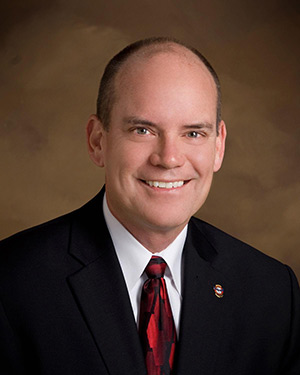From the Chief’s Corner: Does ERCES Secondary Power Source Require a Dedicated Branch Circuit?
Posted on February 24, 2022
This question was sent to us by a member who told us the AHJ on their project was requiring separate dedicated branch circuits for ERCES Primary and Secondary power sources. Before I give you our interpretation, make a mental note of your gut reaction to this real-world question. It’s in the Details… Have you ever read over a section of the fire code or a standard and found yourself immediately convinced you understood it, only to learn that it wasn’t quite what you thought it was? For me, it’s a scenario that plays out more often than you think if you spend any real time working with codes and standards. It reminds me of the idiom "the devil is in the details." A common phrase that refers to a surprise or strange aspect hidden within the details. Some researchers say the phrase originates from the earlier phrase "God is in the details" conveying the idea that everything one does should be done carefully, so as not to miss the really important details. The concept is especially true when it comes to interpreting and enforcing codes and standards because missing one minor detail can significantly change the intended outcome or intent of the requirement. The missed detail could be something simple or it could be something significant that requires the building owner to do more than is required or misses something that impacts life safety. This played itself out recently when the SBC received a call relating to the standards surrounding power supplies for an Emergency Responder Communications Enhancement System (ERCES). The question was asked; do the standards require separate dedicated branch circuits for the Bi-Directional Amplifier (BDA) and the Battery Backup Unit (BBU) of the ERCES? Examine the Standards Let’s start out looking at NFPA 1221 2019 Edition of the standard (which was the adopted standard in the jurisdiction) section 9.6.12.1 that states: 9.6.12.1 Primary Power Source. The primary power source shall be supplied from a dedicated branch circuit and comply with NFPA 72. So, what is a dedicated branch circuit? Although the term is not specifically defined within NFPA, the intent is the dedicated circuit is designed to ensure there is sufficient power available for a specific appliance or system without overloading the electrical circuit. To determine if the BDA and the BBU require separate dedicated branch circuits, let’s look at NFPA 1221 and NFPA 72.
NFPA 72 2019 Edition 10.6.5.1 Branch Circuit. 10.6.5.1.1
10.6.5.1.2 * A quick read of Section 10.6.5.1.2 might lead one to believe the phrase “the equipment” could mean a single piece of equipment. However, the * following 10.6.5.1.2 is one of those “devil in the details” I mentioned. It means there is additional information located within the Annex of the standard. In this case it states the following: A.10.6.5.1.2 Multiple pieces of system equipment can be connected to a branch circuit, subject to the current capacity of the circuit. It is not intended that a branch circuit be limited to a single piece of equipment. It is not intended that the circuit supply power to other than system equipment. For example, a branch circuit could power both a fire alarm control unit and an NAC power supply, but it could not power both a fire alarm control unit and a sprinkler system air compressor. Our Interpretation In our discussion, the BDA and BBU are both an integral part of the in-building ERCES. So, by the standard, they can share a dedicated circuit as long as the combined draw does not exceed the circuit capacity. As you can see, something as simple as an asterisk following a code section can make a real difference in understanding what one is required to do. Missing something simple could be an expensive and unnecessary burden on the building owner which by the way is the one ultimately paying for code compliance. So next time you are reading, interpreting, and enforcing codes and standards it is imperative that a true focus and attention to detail becomes a foundational aspect of one’s work. Like Charles Swindoll once said; “The difference between something good and something great is attention to detail”. Make sure your focus is on track to produce positive results that help others #feelsafeinside.
|


